Yellow birds are a popular set of birds in Colorado, mostly seen during spring and summer (May June). There are 12 species of yellow birds in Colorado, and all are of different features and specifications.
In this article, you will get to learn about each of the birds and their unique features.
1. Lesser Goldfinch
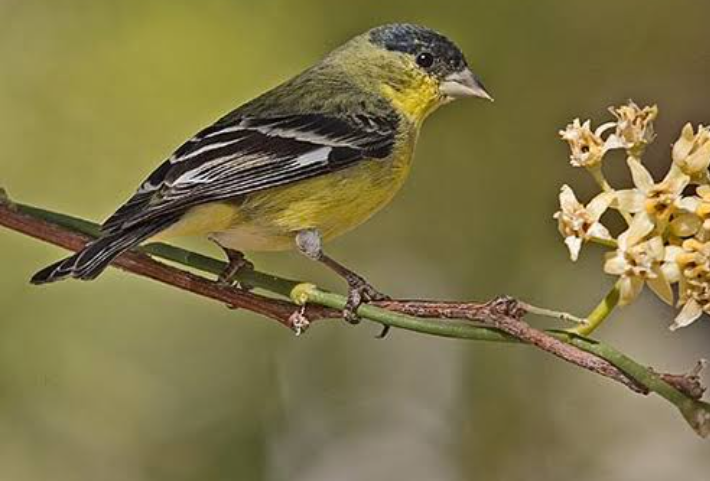
Botanical name: Lesser Goldfinch
Lesser Goldfinch is tiny bright yellow songbirds in Colorado that are seen throughout the year. They are mainly seen in large quantities during late May and October.
Lesser goldfinches are tiny bright yellow and black songbirds with long pointed wings and short notched tails. Females have olive backs and are duller yellow underneath.
- Length: 3.5-4.3 in (9-11 cm)
- Weight: 0.3-0.4 oz (8-11.5 g)
- Wingspan: 5.9-7.9 in (15-20 cm)
Lesser Goldfinches mostly live in the Southwest and Westcoast all year round, but some move down to lower elevations in winter.
You can find Lesser Goldfinches in large flocks in open habitats, such as thickets, weedy fields, parks, and gardens.
Feeding: They feed mainly on seeds, such as sunflower seeds and berries like elderberry, coffeeberry, and buds from sycamores, cottonwoods, willows, and alders.
You can use sunflower seeds and nyjer in tube feeders or platform feeders to attract more Lesser Goldfinches to your backyard.
2. Western Meadowlark
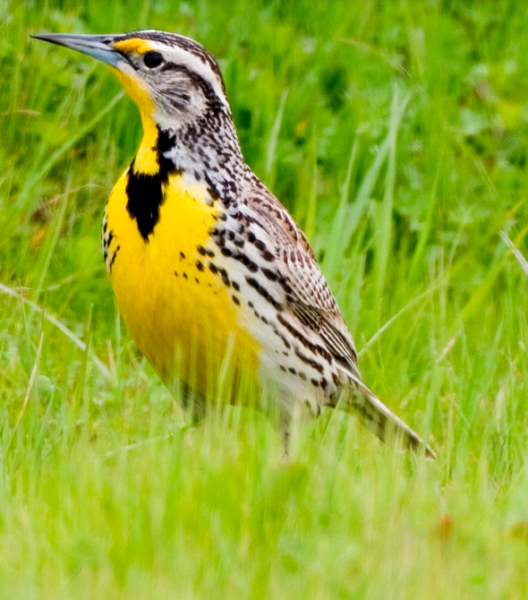
Botanical name: Sturnella neglecta
Western Meadowlarks are popular yellow birds found chiefly during summer. They can also be seen year-round throughout Colorado. However, they are migratory birds that breed in Canada and Northern US before moving to Colorado during May, June. They are known for their yellow bellies and melodious song that makes your day exciting.
Measurements
Both sexes:
- Length – 7.5 – 10.2 (19 – 26cm)
- Weight – 3.2 – 5.3 (90 – 150g)
- Wingspan – 13.8 – 15.8 in (35 – 40cm)
Western Meadowlarks are similar to blackbirds and are as small as a Robin with shades of white and brown upperparts and a black V-shaped band that cut across the bright yellow chest that turns gray in winter.
Feeding: Western Meadowlarks feed mainly on insects and seeds on the ground or those found in small flocks in grasslands, meadows, and fields.
3. Yellow Warbler

Botanical Name: Setophaga petechia
Yellow Warblers are common yellow birds found in Colorado during the summer. They usually arrive in late April and May and leave in September.
Yellow Warblers are primarily bright yellow birds with flanks of yellow-green on their back. The males have chestnut streaks on the breast.
Measurements
Both Sexes:
- Length: 4.7-5.1 in (12-13 cm)
- Weight: 0.3-0.4 oz (9-11 g)
- Wingspan: 6.3-7.9 in (16-20 cm)
Yellow Warblers are migratory birds that move over a long distance. They breed in North America before heading south during the winter Central and Northern South America for winter.
Feeding: Yellow Warblers can be seen foraging insects, such as caterpillars, beetles, midges, bugs, and wasps in wetlands and lowlands.
They are primarily attracted to your backyard by suet, oranges, and peanut butter.
4. Cedar Waxwing
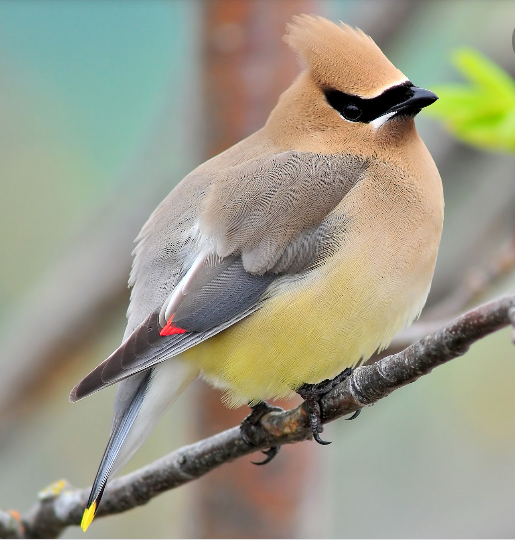
Botanical Name: Bombycilla cedrorum
Cedar waxwing is a common yellow bird in Colorado, which is seen in increasing numbers during summer.
Cedar Waxwings are social birds that are colored pale brown on the head, chest, and crest, with fades of gray on the back and wings and tail.
Their belly is pale yellow with bright yellow on the tip. They have a bright red on the wingtips and a little black mask over their eyes.
- Length: 5.5-6.7 in (14-17 cm)
- Weight: 1.1 oz (32 g)
- Wingspan: 8.7-11.8 in (22-30 cm)
Also, Cedar Waxwings breed in Canada before moving to the southern US for winter. They mainly live in Northern US states.
They are known for their high-pitched, which they make as they fly in berry bushes, woodlands, and streams.
Feeding: they feed on small fruits such as serviceberry, dogwood, juniper, winterberry, and hawthorn.
Plant native trees and shrubs with small fruits, including fruit on platform feeders, to attract more Cedar Waxwings to your backyard.
5. Western Kingbird
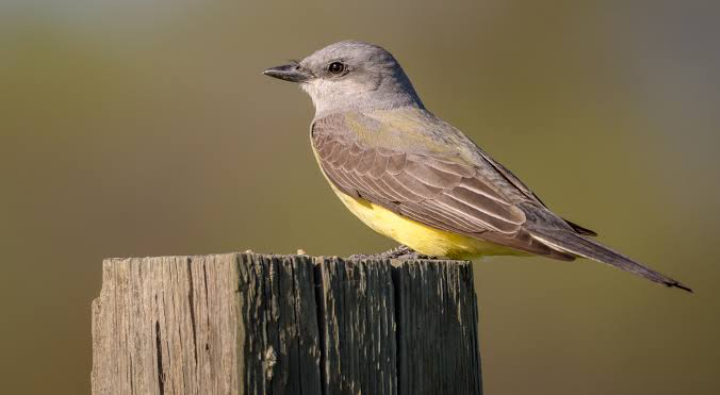
Botanical Name: Tyrannus verticalis
Western Kingbirds are large yellow birds in Colorado that are mainly seen during April and October. Unlike other birds, they fly in here to breed during summer and live afterward. They also breed in the western US and plain areas in Canada.
Western Kingbirds have vivid yellow bellies, gray heads, whitish chests, grayish-brown wings, and a dark tail.
Measurements
Both sexes:
- Length: 7.9-9.4 in (20-24 cm)
- Weight: 1.3-1.6 oz (37-46 g)
- Wingspan: 15.0-16.1 in (38-41 cm)
Additionally, they are known to nest in human-made structures and near the edge of woodlands, where they nest in open trees and forage.
Feeding: they feed primarily on insects. They usually wait in the open to catch nay flying insects and feed on them.
You can attract Western Kingbirds to your backyard by planting berry trees, such as elderberry or hawthorn, also by making it insect-friendly.
6. Orange-crowned Warbler
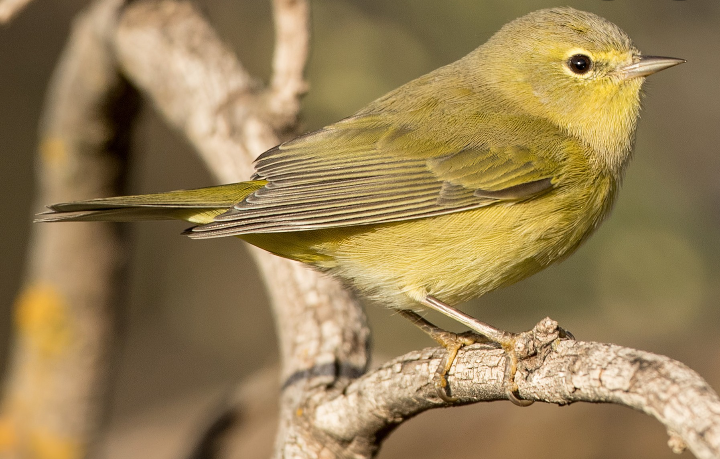
Botanical Name: Vermivora celata
Orange-crowned Warblers are popular yellow birds in breed in Colorado that arrive between April and May to breed and leave in November. They are mainly seen during the summer times.
Orange-crowned Warblers are not brightly colored like other warblers. You can hardly see their yellow crown.
- Length: 4.3-5.5 in (11-14 cm)
- Weight: 0.3-0.4 oz (7-11 g)
- Wingspan: 7.5 in (19 cm)
They also breed in Canada and western states before moving back to the Pacific, East and Gulf Coasts, and Mexico.
You can locate Orange-crowned Warblers in shrubs, vegetation, and open woodland where they do their breeding.
Feeding: They mainly feed on insects such as spiders, caterpillars, and flies. They also feed on fruit, berries and regularly visit backyard feeders.
To attract Orange-crowned Warblers to your backyard, use suet, and peanut butter or hummingbird feeders spiced up with sugar water nectar.
7. Yellow-Rumped Warbler
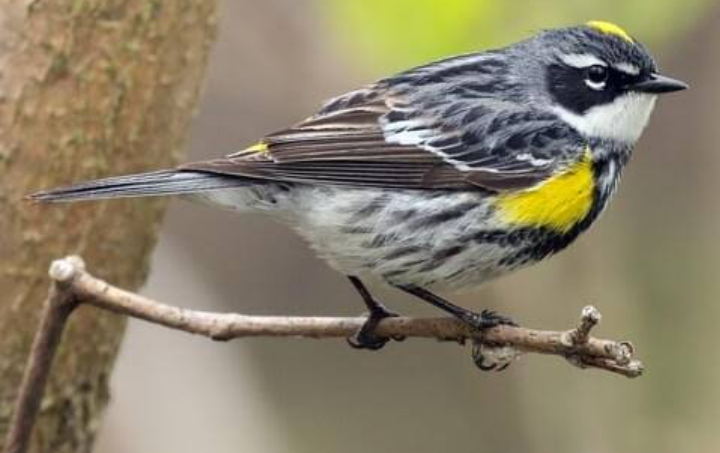
Botanical Name: Setophaga coronata
Yellow-rumped Warblers are found throughout Colorado but are mostly seen during the spring and fall migration. They breed in Canada and migrate to the south and central parts, including Mexico, Pacific Coast, and Central America.
Yellow-rumped Warblers are gray colored with flashes of yellow on the face, sides, and rump and white in the wings. The females are slightly brown. During winter, the birds are bright yellow, while during the summer, they turn gray again in spring.
Measurement
Both sexes:
- Length: 4.7-5.5 in (12-14 cm)
- Weight: 0.4-0.5 oz (12-13 g)
- Wingspan: 7.5-9.1 in (19-23 cm)
Feeding: During winter, they are found in open areas feeding on fruits shrubs. During the summer, they eat mainly insects. That is, their food is insects and fruits such as bayberry and wax myrtle.
You can use sunflower seeds, suet, raisins, and peanut butter to attract Yellow-rumped Warblers to your backyard.
8. American Goldfinch
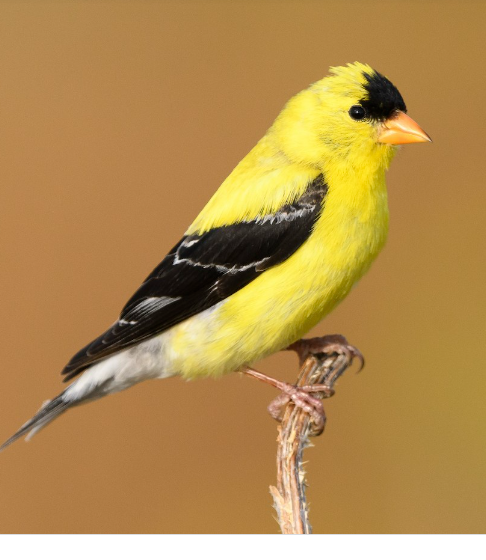
Botanical Name: Spinus tristis
American Goldfinch is a famous yellow bird in Colorado found throughout the year. The males are bright yellow, and they turn black during the spring. The females appear dull brown colored in winter.
Measurements
Both Sexes:
- Length: 4.3-5.1 in (11-13 cm)
- Weight: 0.4-0.7 oz (11-20 g)
- Wingspan: 7.5-8.7 in (19-22 cm)
American Goldfinches do their breeding in Canada and the Mid-West before moving to the southern states
You can find them in weedy fields and overgrown areas where they forage for thistle, sunflower, and aster plants. You can also see them in suburbs, parks, and backyards.
Feeding: American Goldfinches usually feed on thistles and milkweed.
To attract them, try planting sunflowers seeds and nyjer seeds. They will visit your backyards regularly with things in place.
9. Western Tanager
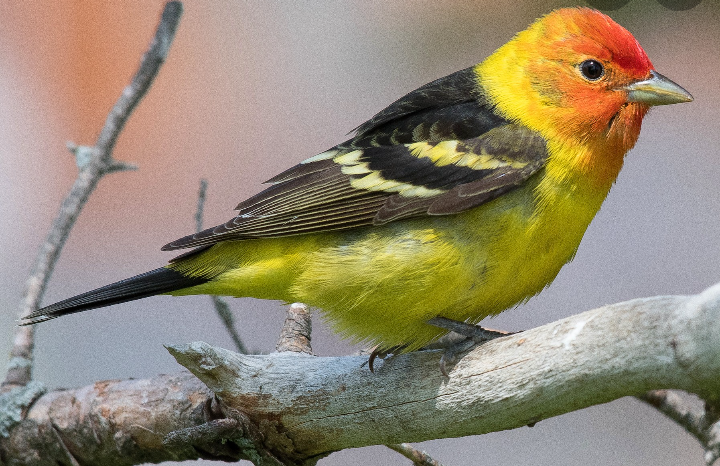
Botanical Name: Piranga ludoviciana
Western Tanagers are popular yellow birds in Colorado that are mainly seen during the summer when they move in to breed. This usually occurs between May and October.
The Western Tanagers have a vivid flaming orange-red head, yellow body, and black wings.
Measurements
Both sexes:
- Length: 6.3-7.5 in (16-19 cm)
- Weight: 0.8-1.3 oz (24-36 g)
The Western Tanagers usually spend their winter in Mexico and Central America.
You can find them in open conifer forests hidden inside the canopy. This makes it difficult for you to see them despite their bright coloring.
The red coloring pigment comes from eating insects that produce a pigment that the Western Tanagers do not produce.
Feeding: Western Tanagers feed on dried fruit, oranges, including other fruits from bird feeders.
10. Common Yellowthroat
src=”https://birdsflock.com/wp-content/uploads/2021/12/Common-Yellowthroat-birdsflock.com-yellow-birds-in-colorado-1024×792.jpg” alt=”Common Yellowthroat birdsflock.com yellow birds in colorado” class=”wp-image-513″/> Common Yellowthroat birdsflock.com yellow birds in colorado
Botanical Name: Geothlypis trichas
Common Yellowthroats are common yellow birds in Colorado that are mainly seen between late April and October. Some of the Common Yellowthroats remain throughout the year.
Common Yellowthroats are mostly small in size, and they are astonishing songbirds that can brighten up your day. They have brown backs, bright yellow breasts, and paler yellow bellies, and long tails. The males usually have a black mask across the face. However, the brightness of the yellow is determinate by their geographical location.
- Length: 4.3-5.1 in (11-13 cm)
- Weight: 0.3-0.3 oz (9-10 g)
- Wingspan: 5.9-7.5 in (15-19 cm)
Common Yellowthroats mostly spend their summer breeding in North America, including the Gulf Coast and Pacific Southwest, except Alaska and northern Canada.
You mostly find them in marshy, wetland areas and brushy fields during the spring and summer.
Feeding: They mainly eat insects, as they are seen around dense vegetation.
11. Yellow-headed Blackbird

Botanical Name: Xanthocephalus xanthocephalus
Yellow-headed Blackbirds are common yellow birds in Colorado that are seen mainly in summer during mid-March and mid-October.
Yellow-headed Blackbirds are striking birds with a vivid glossy black body, bright yellow heads, chests, and white patches on the males’ wings. The females have duller yellow heads.
Measurement
Both sexes:
- Length: 8.3-10.2 in (21-26 cm)
- Weight: 1.6-3.5 oz (44-100 g)
- Wingspan: 16.5-17.3 in (42-44 cm)
They are migratory birds that move in large quantities to fields and farmland in New Mexico, Arizona, Texas, and Mexico during the winter.
You can easily find them in western and prairie wetlands, grasslands, fields nesting in the reeds, foraging all over for insects.
Feeding: They feed primarily on insects in the summer
You can easily attract a large quantity of Yellow-headed Blackbirds to your yard by planting sunflower seeds.
12. Wilson’s Warbler
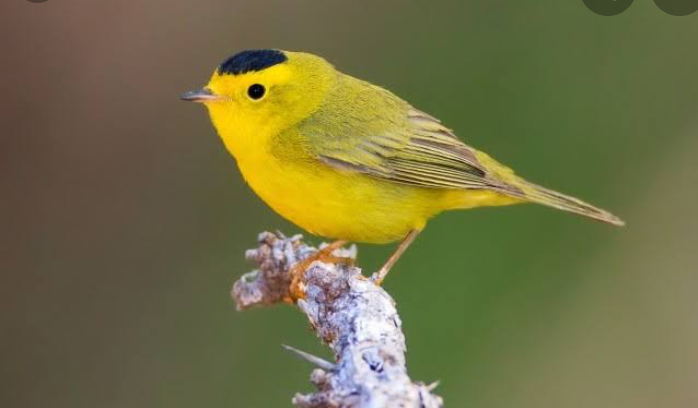
Botanical Name: Cardellina pusilla
Wilson’s Warblers are common yellow birds of Colorado in summer. They are migratory birds that are mainly seen in April until mid-October. They usually start leaving by September,
Wilson’s Warblers are small yellow warblers birds, with an olive cap in females and a black cap in males.
- Length: 3.9-4.7 in (10-12 cm)
- Weight: 0.2-0.3 oz (5-10 g)
- Wingspan: 5.5-6.7 in (14-17 cm)
Also, they breed in Canada, Alaska, and northwestern states and can be seen across all states during migration. They mostly spend winter in Mexico and Central America.
Feeding: They mainly feed on fruits and insects.
Watch More Beautiful yellow Birds Of Colorado Video
FAQs on Yellow Birds in Colorado
Is a Yellow finch the same as a goldfinch?
American goldfinches are common yellow birds seen year-round in the country. Both the Juveniles and female goldfinches are less colorful. The males have a dark bill and dull yellow body feathers. One significant difference between a yellow finch and a goldfinch is that goldfinch has white patches under its tails, while yellow finch does not.
What does it mean when you see a yellow bird?
A yellow bird is a symbol of personal trust and belief. Seeing it helps to remind you of the importance of believing in yourself. You may be seeing yellow birds frequently if you face something that makes you unsure or doubts yourself.
What are the percentages of yellow birds in Colorado during spring and summer?
- Orange-crowned Warbler 5%
- Yellow-headed Blackbird 6%
- Common Yellowthroat 8%
- Lesser Goldfinch 10%
- Western Tanager 12%
- American Goldfinch 20%
- Western Kingbird 22%
- Yellow-rumped Warbler 25%
- Yellow Warbler 28%
- Western Meadowlark 29%
Yellow Birds in Colorado during Winter:
- Western Meadowlark 4%
- American Goldfinch 14%
